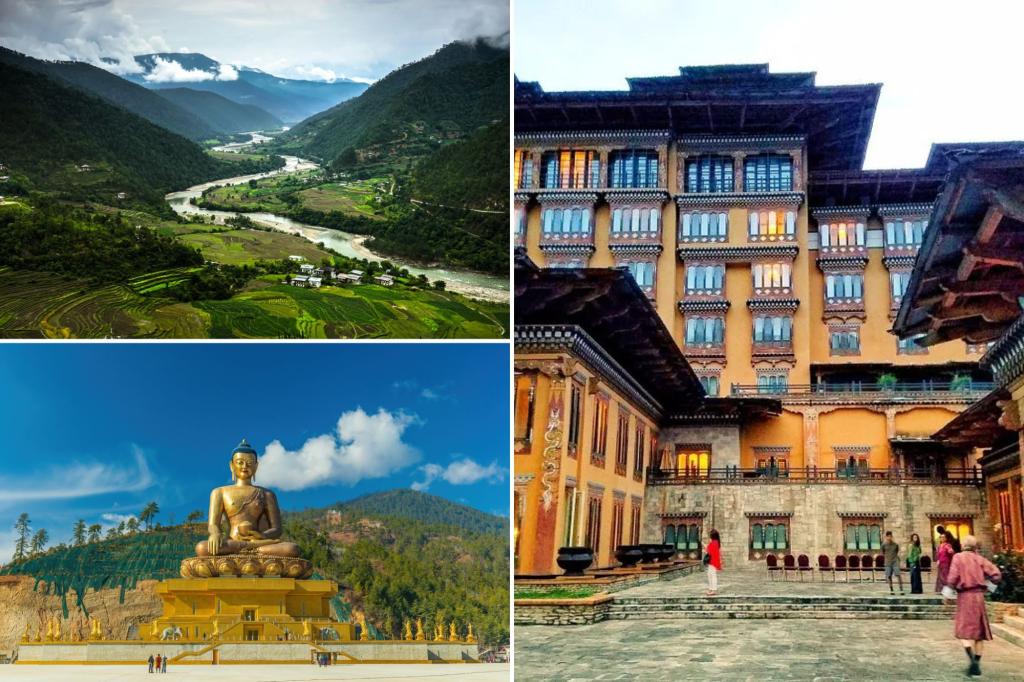Bhutan, known as the “Land of the Thunder Dragon,” is a unique nation hidden away in the Himalayas and accessible only through remote mountain passes. Modernization only started in the 1960s, with the arrival of education, followed by tourism in the 1970s, and then television, internet, and cell phones later on. Wearing national costumes is common in Bhutan, adding to its sense of timelessness. The country is carbon negative, with its forests absorbing more carbon than it emits, due in part to the efforts of its popular king, who focuses on gross national happiness rather than gross national product. Tourism in Bhutan is strictly controlled and involves a daily impact fee paid through certified tour agencies. The aim is to attract “high-value, low-volume” tourists to the country.
The experience of traveling to Bhutan is unique, starting with a dangerous landing at Paro, the country’s only international airport, followed by a visually stunning display of traditional Bhutanese architecture. The capital, Thimphu, is filled with vibrant markets, colorful traditions, and magnificent views. In Bhutan, you can come across a variety of wildlife, from takins to snow leopards, adding to the allure of the country’s natural beauty. One of the highlights of a trip to Bhutan is visiting the sacred sites, such as the Punakha Dzong fortress, Chhimi Lhakhang temple, and the iconic Tiger’s Nest monastery, perched on a cliff high above the valley.
Punakha offers a glimpse of traditional Bhutanese lifestyle, with tiered paddy fields, rivers, and luxury lodges. AndBeyond Punakha River Lodge stands out as a luxury sanctuary, blending local flavors with international cuisine. The lodge is an oasis of relaxation, offering a range of activities from white-water rafting to traditional archery. A stay at the lodge also supports the local community through sustainable practices and sourcing products locally. The Lodge’s commitment to sustainability is evident in its use of local produce and support for community farming initiatives.
After exploring the beauty of Punakha, visitors can return to Paro to visit the Tiger’s Nest monastery and relax at the luxurious Amankora Paro Lodge. The lodge offers traditional stone baths and delicious Bhutanese cuisine, including unique dishes like cordyceps ice cream. A trip to Bhutan also includes cultural experiences such as shopping for local crafts, witnessing traditional dances, and participating in blessing ceremonies. Throughout the country, the Bhutanese fascination with phalluses can be seen, adding a touch of whimsy to the traditional culture.
For visitors to Bhutan, a stopover in Delhi, India can provide a rich cultural experience before or after their trip. Delhi offers a mix of historical sites, local markets, and vibrant neighborhoods to explore. From the historic Humayun’s Tomb to the bustling streets of Old Delhi, there is no shortage of activities to enjoy. Sampling street food, visiting art galleries, and shopping for local crafts are just a few of the highlights of a trip to Delhi. For a memorable dining experience, visitors can try the fusion cuisine at Inja, a Japanese Indian restaurant, or indulge in traditional Indian dishes at local eateries. The Taj Mahal Delhi offers a tranquil retreat in the heart of the city, with luxurious amenities and a vibrant atmosphere that captures the essence of India.


